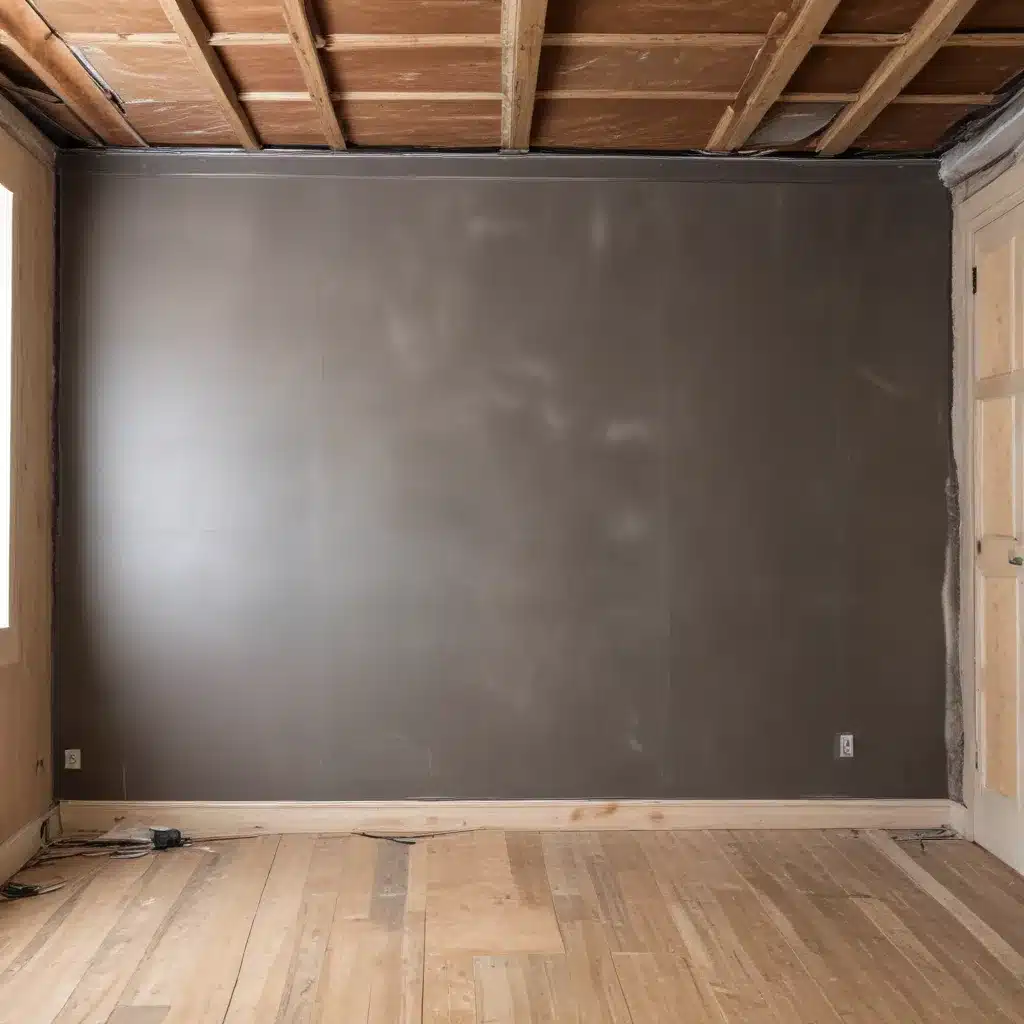
As an experienced home improvement consultant, I’ve witnessed how noise can disrupt the tranquility and functionality of a living space. Whether it’s irritating traffic outside, raucous neighbors, or echoing footsteps within your own home, unwanted sound can quickly turn a renovation project into a stressful endeavor. However, with the right soundproofing strategies in place, you can create a serene, family-friendly sanctuary that aligns with your eco-friendly values and budget-friendly goals.
Understanding Soundproofing Needs for Home Renovations
Before delving into specific soundproofing techniques, it’s essential to understand the factors that influence your soundproofing requirements. The location of your home, the construction materials used, and the intended use of each room will all play a crucial role in determining the appropriate soundproofing solutions.
Factors Influencing Soundproofing Requirements
If you live in a dense urban area or near a major noise source like an airport or highway, you’ll likely need more robust soundproofing measures to create a quiet oasis within your home. Conversely, if you reside in a quieter suburban or rural setting, your soundproofing needs may be less extensive.
The construction materials used in your home can also impact the level of sound transmission. Drywall, for instance, offers limited soundproofing capabilities compared to concrete or masonry walls. Likewise, single-pane windows allow more noise infiltration than double-glazed or triple-glazed windows.
Identifying Noise Sources in Home Renovations
During your home renovation, it’s crucial to identify the primary sources of noise that you aim to mitigate. Common culprits include:
* Exterior noise (traffic, construction, neighbors)
* Noise between rooms or floors (footsteps, conversations, appliances)
* Noise within a room (echoes, vibrations, HVAC systems)
Pinpointing these noise sources will help you tailor your soundproofing solutions to address the specific challenges in your home.
Noise Reduction Strategies for Different Rooms
The soundproofing requirements may vary depending on the intended use of each room. For instance, a home office or home theater may require more comprehensive soundproofing to ensure a quiet, focused environment, while a child’s bedroom may need solutions to block external noise and create a soothing, family-friendly atmosphere.
Soundproofing Materials and Techniques
When it comes to soundproofing, a multifaceted approach is often the most effective. By combining various materials and techniques, you can create a comprehensive sound barrier that addresses both impact noise (such as footsteps) and airborne noise (such as voices or music).
Drywall and Insulation Solutions
Upgrading your drywall and insulation can significantly improve the sound-blocking capabilities of your walls and ceilings. Consider using double-layered drywall, which creates an air gap that helps to absorb sound waves. Pair this with high-density acoustic insulation, such as mineral wool or rigid foam, to further enhance the soundproofing performance.
Acoustic Panels and Absorbers
In rooms with hard surfaces, such as home theaters or music studios, acoustic panels and sound absorbers can be incredibly effective in reducing echoes and reverberation. These panels, often made from materials like recycled cotton or mineral wool, can be strategically placed on walls and ceilings to trap and dissipate sound energy.
Specialized Soundproofing Products
There are also specialized soundproofing products available that can be integrated into your renovation project. Green Glue, for example, is a non-toxic, visco-elastic compound that can be applied between drywall layers to dampen vibrations and reduce noise transmission. Quiet Batt insulation and Echo Absorber panels are other examples of innovative, eco-friendly solutions that can enhance the acoustic performance of your home.
Structural Modifications for Quieter Spaces
While material choices are essential, certain structural modifications can also contribute to a more soundproof and peaceful living environment.
Wall and Ceiling Upgrades
Increasing the mass and density of your walls and ceilings can dramatically improve their sound-blocking capabilities. Consider upgrading to solid-core doors, which are more effective at reducing noise transmission than their hollow-core counterparts.
Door and Window Considerations
Upgrading to double-paned windows or triple-paned windows can create an effective sound barrier, while also improving your home’s energy efficiency. Sealing any gaps and cracks around doors and windows with weatherstripping or caulk can also help to prevent noise infiltration.
Flooring Choices for Sound Dampening
The type of flooring you choose can have a significant impact on noise reduction, especially in multi-story homes. Cork flooring and carpets are excellent options for absorbing impact noise and creating a quieter living environment.
Integrating Soundproofing into Renovation Design
When planning your home renovation, it’s essential to take a holistic approach to soundproofing, balancing aesthetic considerations with functional requirements.
Holistic Soundproofing Approach
Incorporate soundproofing strategies into the design phase of your renovation, rather than treating it as an afterthought. This allows you to seamlessly integrate sound-blocking materials and structural modifications into the overall renovation plan, ensuring a more cohesive and effective outcome.
Balancing Aesthetics and Function
Soundproofing does not have to compromise the visual appeal of your home. Many acoustic panels and insulation products now offer modern, stylish designs that can enhance the interior decor of your renovated spaces.
Consulting Soundproofing Experts
If you’re unsure about the most appropriate soundproofing solutions for your home, consider consulting with a professional acoustician or sound engineer. They can provide tailored recommendations and guidance to ensure your renovation project achieves the desired noise-reduction goals while aligning with your budget and design preferences.
By incorporating these soundproofing strategies into your home renovation, you can transform your living space into a tranquil oasis, free from unwanted noise and disturbances. Whether you’re aiming for a budget-friendly update, an eco-friendly overhaul, or a family-friendly design, prioritizing sound control can significantly enhance the overall comfort, functionality, and value of your renovated home. For more information and inspiration, visit Reluctant Renovator, your go-to resource for all things home improvement.



